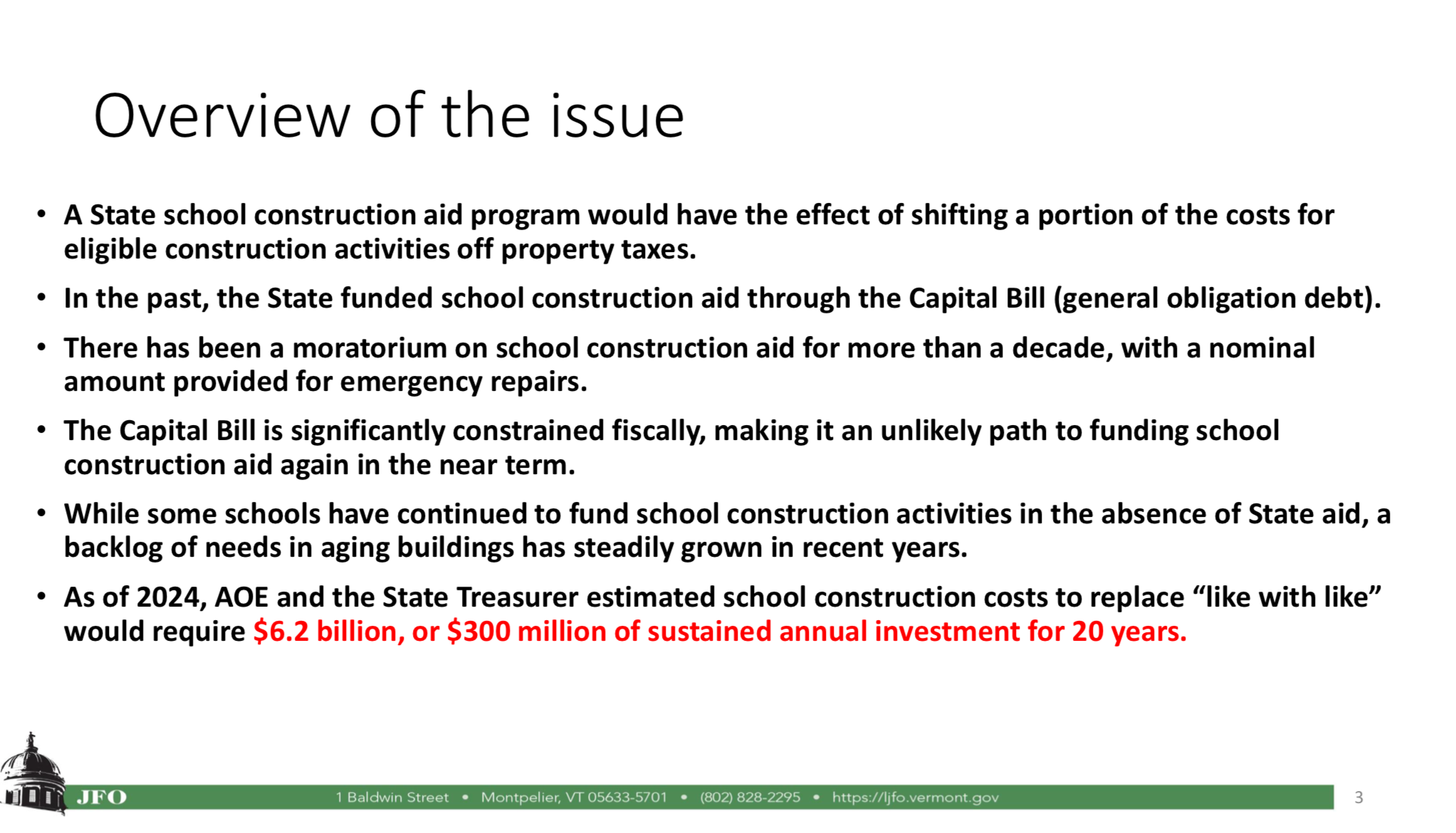Act 73 Resources
Written by Rich Monterosso, South Hero School Board Chair:
Let’s be very clear. Taxpayers demanded tax relief - not a complete dismantling, and crisis-driven restructuring of their education system, ending the long history of local school board budgeting authority. VT Public’s Lola Duffort (in an animated video made prior to Act 73) explains how our current statewide education funding system works: How does Vermont fund its schools? Act 73 is a law which consolidates School Districts and by centralizing education authority, especially financially, at the state level. It was passed with support of leadership of both major parties and signed by the Governor. The Governor subsequently stated that he was not happy with the $15,033 per student foundation formula in the law that he signed and has pledged to reduce this per capita payment even further when the legislature reconvenes in January 2026. Here are some resources with information about the complex matrix of Act 73 working groups, which are preparing their recommendations for review by our elected legislators who will vote on these provisions. If there is not legislative agreement on its key components, Act 73 will “fail” and it’s back to the drawing board. Act 73 is a very complicated landscape. As the various working groups deliberate about their recommendations, many highly informed members are questioning whether, in good conscience, they can vote to recommend the proposals on the agenda of their committees. We need to stay informed about key issues and hold the decision makers accountable to invest in the best interests of our preK-12 students. Our public schools are the foundation of our communities and are essential to attracting younger families to live in our rural towns
Rich Monterosso , South Hero School Board Chair
Calendar for Working Groups Established by Act 73 with Deadlines for Submitting Their Recommendations to the Legislature


Voting Wards Working Group:
Although this group, which includes the Secretary of State’s office, has started meeting to discuss establishing guidelines for mapping voting wards (which will span across multiple towns in many cases), they cannot actually start drawing any voting map(s) for school boards until the Redistricting Task Force has finalized its recommendations for 1-3 maps by 12/1/25.
Class-Size Minimums, "Necessary Schools" and Transportation Reimbursement:
12/1/25 State Board of Education submits report to legislature with proposed standards for schools to be “Small by Necessity” (less than 100 students) or “Sparse by Necessity” (fewer than 55 residents per square mile).
12/15/25 Agency of Education submits report to the legislature on “clear and equitable guidelines for minimum transportation to be provided and covered by transportation grants.”
8/1/26 State Board of Education amends Educational Quality Standards (Rule 2000 series) “… to assure compliance with the class size minimum standards.”
7/1/26 (FY27) Class-size minimum rules apply
7/1/27 (FY28) Class-size minimum non-compliance actions apply (AOE)
Education Policy Standards:
https://education.vermont.gov/vermont/content/education-policy-changes
Including class-size minimums:
Kindergarten: No minimum requirement
Grade 1: 10 students
Grades 2-5: 12 students
Grades 6-8: 15 students
Grades 9-12: 18 students (exceptions noted)
State Aid for School Construction Program/Advisory Board:
(Act 73 established this working group to plan and problem solve with no funding plan or commitments. The administration, which has promised to reduce education property taxes, has not provided for the cost of infrastructure repairs, improvements and new construction for this exorbitant ANNUAL statewide cost. The earliest possible availability of construction funds would be after 7/1/27 during FY28: https://education.vermont.gov/vermont/accordion-type/act-73-summary
Please note that in 2007 (18 years ago) the state cut off state aid for school infrastructure and construction, allowing school buildings throughout the state to deteriorate.
In their January, 2025 report, the non-partisan Vermont Joint Fiscal Office (JFO) reported that in 2024 the Agency of Education and the State Treasurer estimated that it would take $6.2 Billion (with a “B”) or $300 Million per year for 20 years to address the current school infrastructure needs:

The Current State of Special Education Delivery, Legislative Report Issued by the Agency of Education, July 26, 2025:
https://education.vermont.gov/sites/aoe/files/documents/edu-act-73-special-education-report-2025.pdf
From 25 years as a school social worker, I know from personal experience that the proposal to assign a fixed amount of special education funding based upon a student’s individualized Education Plan (IEP) eligibility category (i.e., Specific Learning Disability, Intellectual Disability, Emotional Disturbance, etc.) cannot accurately provide school districts with sufficient funding for the wide range and intensity of each student’s individualized educational needs.
Foundation Formula/State Payment:
Note: Starting 7/1/28 (FY29) under Act 73, Total Education Spending and per student foundation formula funding will be set at the State level.
Without regard to educational needs and expenses, the legislature and Governor will budget a predetermined amount in their state budget based upon FY25 (2024-2025) expenditures. School Boards will no longer be able to determine, with public input, the financial needs of their districts, and submit budgets for local voter approval/rejection.
November 2027 (Intended Date): Election of School Board Members for New Act 73 Districts Based Upon New Voting Wards
July 2028 (Intended Date): New District School Boards assume full responsibility (except for no longer setting budgets based upon the needs of their districts) and must operate with the funding the State provides.
If a district’s taxpayers want to raise up to 10% more funds, they can vote to increase their own tax and pay the substantial penalties involved.
The Public Assets Institute in Montpelier published this report which includes an overview and very readable Q&A on many aspects of Act 73.
Public Assets concludes that the new property tax formulas in Act 73 will disproportionately increase taxes on lower and middle income homestead households, while excluding any taxation based the income of more wealthy property owners
